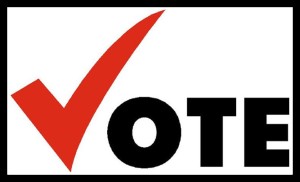Danger, what Danger?
The advantages of being a change agent often come from being outside the process or the culture. We get to look at it from a different angle. We also have tools and skills that help us leverage that perspective. We can bring a breath of fresh air.
Or we can be annoying. I know, it’s hard to believe. We’re here to help. How can that be bad? True, it’s not always our fault. You can work with groups that are in defensive mode, or jaded mode or cynic mode and will initiate those behaviors as soon as you walk in the door.
But sometimes it is our fault. Heaven knows I’ve fallen into the pit more than once. I have scars to prove it.
Besides being a charming cult of personality, what are some ways to avoid some of those pitfalls? Let’s take a look.
The Pit of Objectivity
This one is usually covered by branches of good intentions. We mean well. Really, we do. But we often confuse having perspective with being objective. I hate to break it to you but not one of us is objective. Not a single one. We might not have the cultural baggage but we are not objective.
We come with process biases, strategic opinions, schools of thought, methodology approaches. All of which are good. And all of which will influence your interaction with your team. That’s OK. But it’s not objective. You know it and I know it and more importantly the team knows it.
How do we avoid this? A couple options. One: Do not tell them you are objective. Don’t bring it up or use the word at all. Two: Specifically tell them you are not objective for the exact reasons stated above.
Instead tell them how you are going to interact with. Tell them where you come from and what your philosophies are. And then show them.
The Pit of Ego
This is a tough one. It’s hiding in plain sight. We’re experts. We’re good at what we do. We need to have confidence in that. We need to have a healthy ego. No one wants to follow someone who lacks surety.
So we have to talk about what we know. We have to talk about what we’ve done and seen. We have to illustrate some of our skills and knowledge. This is indeed necessary. The problem is that we are talking a lot about ourselves. A lot.
The team might start seeing us as the talking head, the expert from out of town, the know it all. In fact the team might give us a little nudge into the Pit of Ego.
How do we avoid this? Redirection. Always, always, always bring it back to the team. Never end an exposition without bringing it back to the team or the project. This is what I know. This is what I see. Then. What do you see? What do you know? How is my perspective valid? How is my perspective not valid?
The best thing about this approach is that you can even use it if they’ve already pushed you in the pit. Bring it back to the team. They might even help you out.
The Pit of Immersion
Or sometimes called going native. This is a pitfall where we perhaps do not become annoying but ineffectual. Out of good intentions, of course. We perhaps try so hard not to be annoying that we pass from empathy for their situation to sympathy. We take up their cause. We see and champion all the wrongs that stop them from moving on.
We often do this with jaded and cynical teams. We do it to build trust. But we move in closer and closer and soon are in the middle and have lost whatever perspective we had. We’ve gone native.
How do we avoid this? Keep going back to the goal, your mission, your objective. We must ask ourselves repeatedly, what are we trying to achieve?
If the team is too jaded and defensive to buy into the objective, the objective needs to change. The objective needs to be to change their attitude. We need to be aware of how we’re achieving trust and not fall into the Pit of Immersion.



